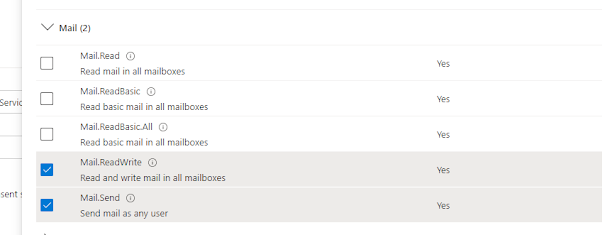ChatGPT is a language model that is optimized for conversational interfaces. It can interact with users in a natural and engaging way, and can also perform tasks such as generating code, optimizing code, and testing code .
Here are 5 ways you can use ChatGPT to boost your
productivity as a C# developer:
Code Optimization
Optimizing your code can improve
its performance, readability, and maintainability. However, it can also be
challenging and complex, especially for large and legacy codebases. ChatGPT can
help you optimize your code by suggesting improvements and refactorings based
on best practices and coding standards. You can ask ChatGPT to review your code
and provide feedback on how to make it more efficient, elegant, and consistent.
You can also ask ChatGPT to apply the suggested changes automatically or
manually.
Chat GPT is a powerful tool that can help you optimize your
code with examples for c#. Chat GPT is a chatbot that uses natural language
processing and deep learning to understand your coding problems and generate solutions.
You can ask Chat GPT to optimize your code for speed, memory, readability, or
any other criteria you specify. Chat GPT can also provide you with examples of
how to use different features or libraries in c#, such as LINQ, async/await,
delegates, etc.
For example, suppose you have a code snippet that calculates
the sum of all the even numbers in an array:
int[] numbers = {1, 2, 3, 4, 5, 6};
int sum = 0;
for (int i = 0; i < numbers.Length; i++)
{
if (numbers[i] % 2 == 0)
{
sum += numbers[i];
}
}
You can ask Chat GPT to optimize this code for speed and
readability. Chat GPT might generate something like this:
int[] numbers = {1, 2, 3, 4, 5, 6};
int sum = numbers.Where(n => n % 2 == 0).Sum();
This code uses LINQ to filter the even numbers and sum them
in one line. This is faster and more readable than the original code.
As you can see, Chat GPT can optimize your code with
examples for c# in various ways. You can use Chat GPT to improve your coding
skills and productivity. Chat GPT is your friendly and helpful coding
assistant.
Code Generation
Sometimes you may need to write new
code from scratch or extend existing code with new features or functionalities.
ChatGPT can help you generate code based on your natural language description
or specification. You can simply tell ChatGPT what you want to achieve or
implement, and it will write the corresponding C# code for you. This can speed
up your development process and also help you explore new ideas and
possibilities.
Another example is if you want to learn how to use
async/await in c#. You can ask Chat GPT to show you an example of how to make
an asynchronous HTTP request using HttpClient. Chat GPT might generate
something like this:
using System.Net.Http;
using System.Threading.Tasks;
async Task GetResponseAsync(string url)
{
HttpClient client = new HttpClient();
HttpResponseMessage response = await client.GetAsync(url);
response.EnsureSuccessStatusCode();
string content = await response.Content.ReadAsStringAsync();
return content;
}
This code uses the async and await keywords to make an
asynchronous HTTP request and return the response content as a string. This is
more efficient and elegant than using synchronous methods or callbacks
Code Documentation
Documenting your code is important
for making it understandable, reusable, and maintainable. However, it can also
be boring and repetitive, especially for complex and lengthy code. ChatGPT can
help you document your code by generating comments, summaries, and descriptions
based on your code logic and structure. You can ask ChatGPT to document your
code at different levels of granularity, such as methods, classes, modules, or
projects. You can also ask ChatGPT to update your documentation when you make
changes to your code.
It can summarize your code by extracting the main logic and
functionality of your program and presenting it in natural language. For
example, if you have a code snippet like this in C#:
using System;
class Program
{
static void Main(string[] args)
{
int x = 10;
int y = 20;
int z = x + y;
Console.WriteLine("The sum of x and y is " + z);
}
}
Chat GPT will then summarize the code like this "The program defines three variables: x, y, and z. It assigns
the values 10 and 20 to x and y respectively. It calculates the sum of x and y
and assigns it to z. It prints the value of z to the console".
Code Debugging
Debugging your code can be frustrating and time-consuming, especially when you encounter errors or bugs that are hard to find or fix. ChatGPT can help you debug your code by providing suggestions and solutions based on your error messages or test results. You can ask ChatGPT to explain the cause of an error or bug, suggest possible fixes or workarounds, or apply the fixes automatically or manually.
Unit Test Generation
Writing unit tests can be tedious and time-consuming, but they are essential for ensuring the quality and reliability of your code. ChatGPT can help you generate unit tests automatically based on your code and specifications. You can simply provide ChatGPT with your code snippet and some test cases, and it will write the corresponding unit test code for you. This can save you a lot of time and effort, and also help you catch bugs and errors early on.
These are just some of the ways you can use ChatGPT to increase productivity for software developers who use C#. ChatGPT is a powerful and versatile tool that can handle a variety of tasks and scenarios related to C# development. You can try ChatGPT yourself at chat.openai.com or learn more about it at openai.com/blog/chatgpt.
**Note, this was written using AI and was a test of Chat GPT to see if it would increase organic traffic**





